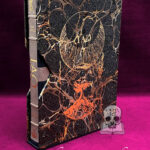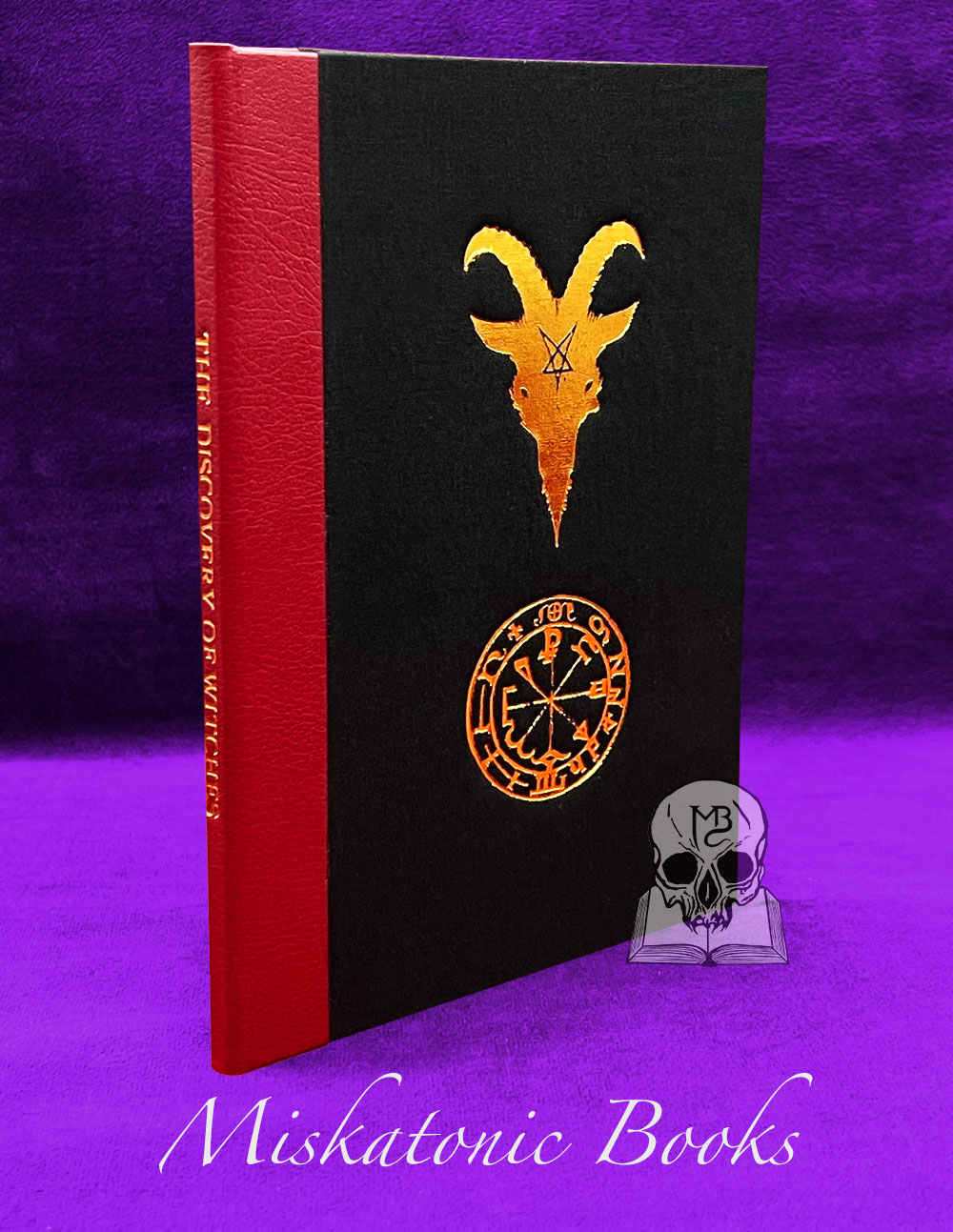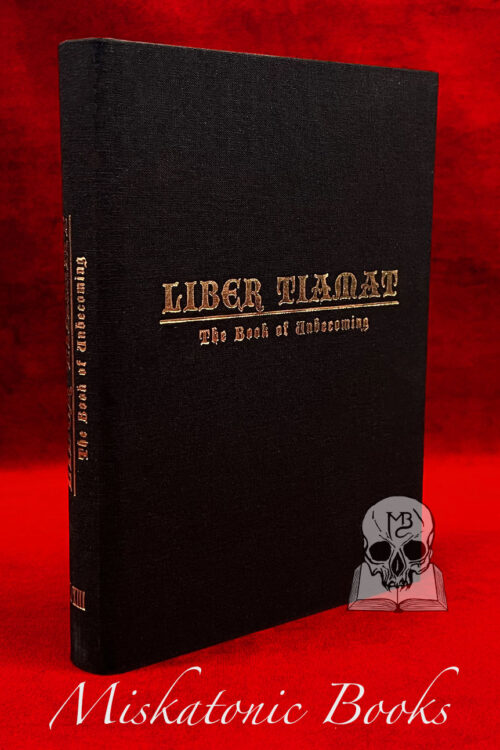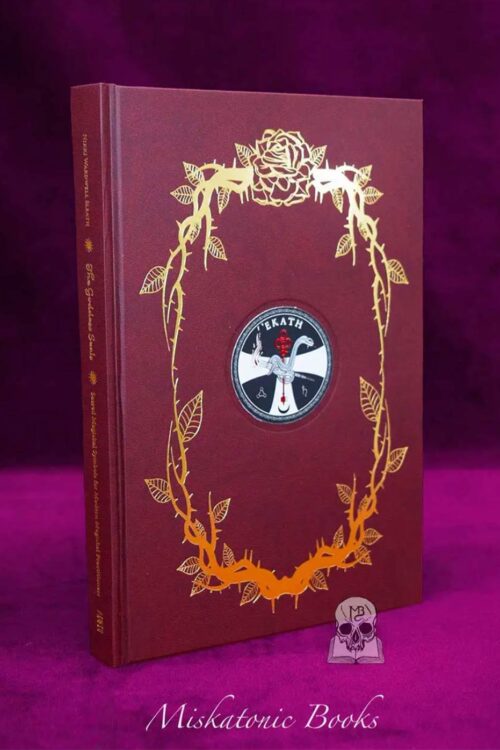$595.00
IAO: Ophite Iconography by Jose Gabriel Alegría Sabogal – Deluxe Leather Bound ARTISANAL Limited Edition in Custom Slipcase
Out of stock
ARTISANAL Edition with Slipcase (Strictly Limited to 44 copies — 2022): 6.5 x 9.5 inches. 224 pages. Hardbound 100pts, bound in Navy Blue & Gray (inserted cutout) Nigerian Goatskins Leather with Raised Bands on the spine. Gold foil blocking on rounded spine and on the cover & backcover. Bound by world-renowned bookbindery in the UK.
Full-Colour interior, with hand-custom-made Marbled Endpapers by artisan Freya Scott. Gold coloured Headbands. Illustrated throughout by José Gabriel Alegria Sabogal. Fine typography and layout by Joseph Uccello. Printed on textured paper: Strathmore Cambric Platinum White 200M archive-quality paper. + Comes with a carton-plate insert glued on the interior, individually hand-numbered, and signed by the author & artist José Gabriel Alegria Sabogal.
Slipcase bound in Navy Blue Nigerian Goatskin Leather + the same Hand-Made Paper as the Endpapers, tooled with Gold foil blocking on the recto side of the slipcase.
Book is in new unread condition
Published by Anathema Publishing
From the Publisher:
IAO is an iconographic proposal, an attempt to illustrate the Gnostic worldview and its myths as understood by the Ophites, a sect of which little is known. It is, perhaps, an exercise of imagination, of what Christian iconography could have resembled if the Ophites had survived. Visually, it follows the sequences of the Speculum Humanae Salvationis and the Biblia Pauperum, reordering their contents according to this heterodox initiative.
“Gnosticism lacks images in a remarkable way, the abstraction of its texts is only equated by the visual silence of its few and discrete remains. And yet the texts are filled with images!
“These images are, in fact, visions, allegories, and myths of a yet unexplored richness. And the ambitious proposal here is to consolidate an iconographic programme…”
Central to this initiative is the reconstruction of the Ophite diagram described by Origen of Alexandria in Contra Celsum – a complex system in which their whole cosmic vision was integrated.
“The three axis, which the images will revolve around, are three distinctive topics of the gnostic worldview: The demiurge (and his relation to the manifested world), the myth of Sophia (and the female aspects of the divine), and the ophite Christology, or the saviour as a serpent.”
IAO rejects the commonly held notion of Gnosticism as a mere form of dualism within Christianity, and explores its relationship with other religions – if only by conceptual coincidence, following Edward Conze’s comparison between Buddhism and Gnosis.
Moreover, the Ophites, by declaring Christ to be an incarnation of the Serpent of Genesis, stood outside the moral spectrum of what is now understood as Christianity. Instead, notions of non-duality can be found in the doctrines of Basilides and the idea of the Pleroma, which are explored within, both conceptually and visually.
¶ CONTENTS:
Introduction
¶ The World as Reflection
¶ Sophianic Figures
¶ The Image of the Pleroma
¶ Appendix. Sibylline Dialogues: An Imaginary Conversation with William Blake
¶ Transcription & Translation of the Sibylline Dialogues
Bibliography
 IAO: Ophite Iconography by Jose Gabriel Alegría Sabogal - Deluxe Leather Bound ARTISANAL Limited Edition in Custom Slipcase
IAO: Ophite Iconography by Jose Gabriel Alegría Sabogal - Deluxe Leather Bound ARTISANAL Limited Edition in Custom Slipcase
| 5 star | 0% | |
| 4 star | 0% | |
| 3 star | 0% | |
| 2 star | 0% | |
| 1 star | 0% |
Sorry, no reviews match your current selections


In stock

Only 1 left in stock

In stock
Miskatonic Books | P.O. Box 204, Laurel MT 59044, United States